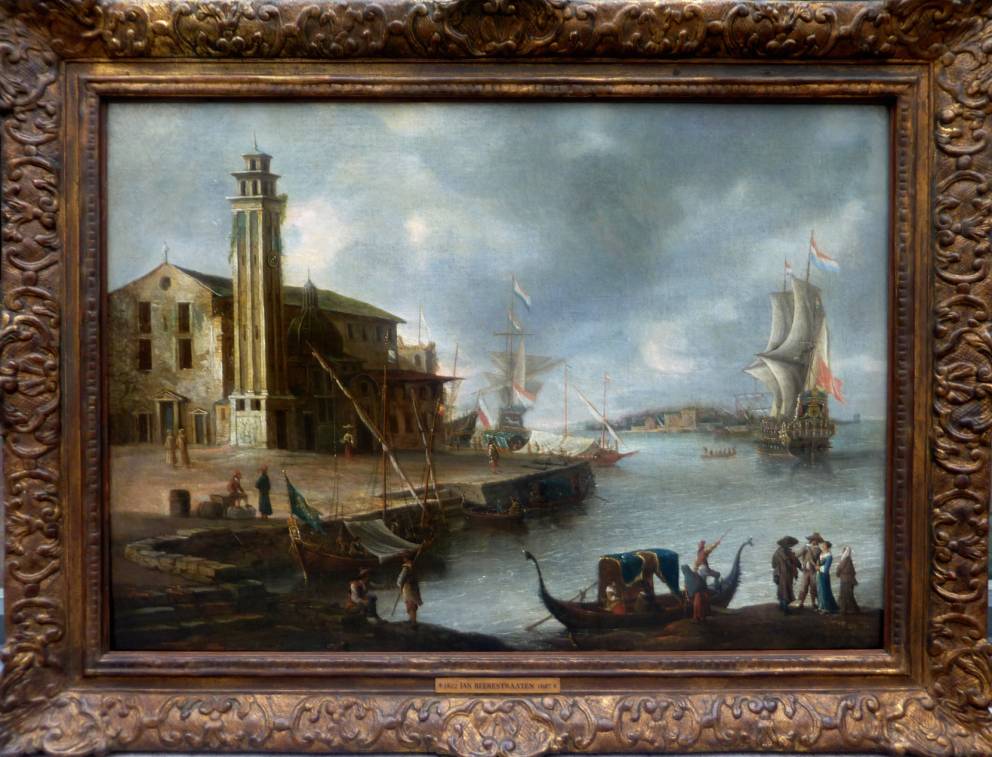An imaginary view of Venice, with elegant figures embarking a gondola next to the
church of San Lorenzo, Dutch men-o’-war and other shipping in the background
Oil on canvas : 49,7 X 65,4 cm
Inscribed and signed lower left “Sat Laurens te venit… / J Beerstraaten fecit”
Frame : 60,5 X 79,5 cm
"All paintings are fully documented with texts and photographs of comparative items. All this information is removed from our website once the painting is sold".

About Jan Abrahamsz. Beerstraaten
Dutch painter
Amsterdam 1622 – 1666 Amsterdam
His name is sometimes spelt ‘Johannes Beerstraten’.
Painter of Mediterranean harbours and of Dutch winter scenes.
His fantasized Southern port views are typical of the third quarter of the 17th century. It is not sure if Jan ever visited Italy, or if he was inspired by engravings and paintings of colleagues. But seeing the accuracy of his rendering of the warm, dappled, southern light it is very probable that he did travel through Italy.
Jan Beeerstraaten also painted stormy sea views; during the starting years of his career the façade of both his houses in Amsterdam, the one close to the Haarlem gate and the later one on the Rozengracht, bore a sign ‘In de Schipbreuck’ (‘in the Shipwreck’).
Member of a family of painters. There still reigns some confusion about the identity of its members and about their identification on the basis of their signatures.
Our painter, Jan Beerstraaten, son of Abraham, who was a cloth-weaver from Friesland, was the most successful painter of his family.
Jan’s eldest son, named Abraham (born in 1643) after his grandfather, was also a painter, as was Anthonie, whose relationship to Jan and Abraham is unknown. According so some sources Abraham was a brother of Jan. The paintings of all three Beerstraaten painters are very similar in subjects, technique and style.
There were also family ties with another family of painters, the Storck, who were strongly influenced by Jan in their fantasized Mediterranean views.
It is known from the inventory made after his death that Jan Abrahamsz. Beerstraaten possessed a huge library for those days.
